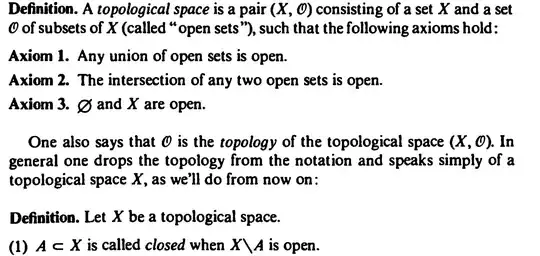Open Set definition of a Topological Space, from Jänich's Topology:
 From definition (1) for some set $A \subset X$: $$X \setminus A \text{ is open} \implies A \text{ is closed}$$
From definition (1) for some set $A \subset X$: $$X \setminus A \text{ is open} \implies A \text{ is closed}$$
Further, from Axiom 3, $\emptyset$ and $X$ are both open. So we have that
$$X \setminus \emptyset = X \text{ is open} \\ \text{and} \\ X \setminus X = \emptyset \text{ is open}$$
This implies that $\emptyset$ and $X$ are both open and closed. Is this correct to say?